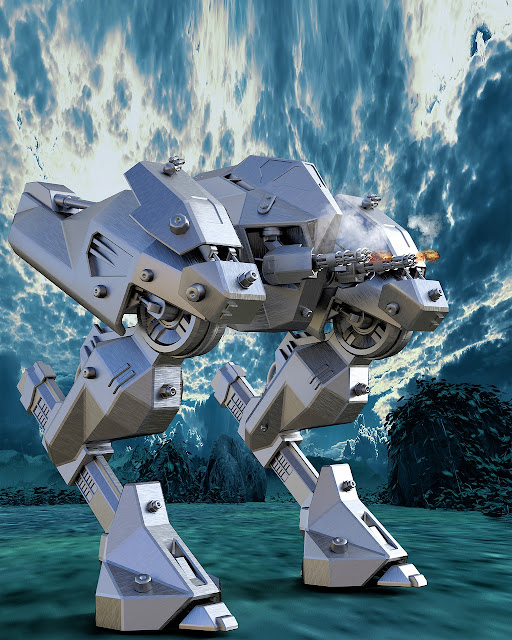The United States has created a robotic dog to fight the war in the future
The United States has created a robotic dog to fight the war in the future
It looks like a sci-fi scene. A four-legged robotic dog jumps out of a U.S. Air Force plane and into an airfield in the Mojave Desert. It gives a glimpse of possible future wars. However, the use of high technology by the US military so far last year is not a movie scene.
According to a news release issued by Air Force News on September 3, the soldiers, who flew in an Air Force C-130 to a potentially dangerous airfield, boarded the plane and took out the robot dogs to detect the danger. The U.S. military says these state-of-the-art robots have only one link to the Advanced Battle Management (ABMS) system.
The system uses artificial intelligence and rapid data analytics to identify and counter the risk of attacks on US military assets in space and possible missiles or other methods in the United States. According to Bill Roper, assistant secretary of the Air Force of Acquisition, Technology, and Logistics, the challenge for future troops will be to evaluate the dilemma of gathering information on the battlefield. "To fight effectively, they will have to rely on nano-second data synthesis," Roper said of the MBMS exercise. It will be no less important than jet fuel or satellites in the next generation of warfare. 'The latest exercise, held from August 31 to September 3, involved all branches of the US military, including the Coast Guard and dozens of industry teams. During the exercise, 30 places in the country were used.
The Nile Air Force Base in Nevada was one of the places used for training, where robot dogs came out together. "Keeping all of our guards close to the plane, the dogs give us a glimpse of the area," said Lee Boston, a master sergeant in the Air Force's 621st Contingency Response Group.
Produced by Ghost Robotics of Philadelphia, the company has dubbed them Vision 60 UGVs or Independent Unmanned Ground Vehicles. The company has promoted the ability of robots to carry a set of sensors and radios in any field or environment. Compared to other robots with legs and traditional wheel-tracked UGVs, our robots with legs are designed with less technical difficulty, 'the company's website states,' By reducing the difficulty we have automatically increased its durability, speed, and endurance. Our QU-UGVs don't stop. '
In the future, these robots could become an important part of the US military, and Air Force statement said. ‘We are exploring how to use ABMS to link sensors to shooters at speed and under threat on all battlefields. To fight and win in the information age, it is necessary to mature such thinking and capabilities, 'said John Raymond, Chief of Space Operations. "Our warfarers and fighter commands must fight at the speed of the Internet to win," said Air Force Chief of Staff General Charles Brown Jr.




Comments
Post a Comment
If you have any doubts. Please let me know.